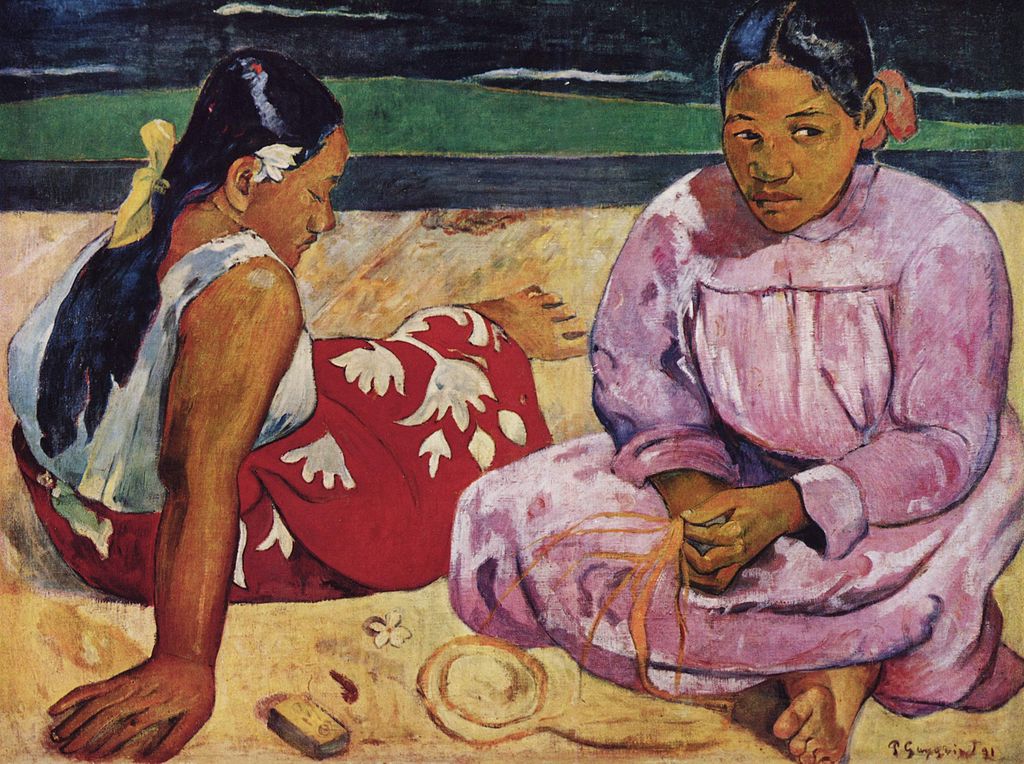French Post-Impressionist painter Eugène Henri Paul Gauguin was born on June 7, 1848. He was an artist that gained more recognition and appreciation after his death. His style was distinctly different from Impressionism, with his synthetist style and experimental use of color. His influence was remarkably present in the works of modern and avant-garde artists, particularly Henri Matisse and Pablo Picasso.
Paul Gauguin’s experimentation with color led to the creation of the Synthetist style in modern art. On the other Primitivism and the return to pastoral painting was a result of his expression of the underlying meaning of his paintings’ subjects.
Gauguin was born in Paris where his father worked as a journalist. Originally they were from Orléans, where his grandparents and other relatives were greengrocers and market gardeners. In fact his last name, Gauguin, meant “walnut grower.” He was barely two when his family went to Peru and they lived in Lima for four years. It was in Peru that Gauguin got his first exposure in art, with his mother an avid collector of Inca pottery. They went back to France when he was seven and lived with his grandfather. At age 17 he started fulfilling his mandatory military service and afterwards joined the French navy. At age 23 Paul Gauguin lost his mother. Her boyfriend (Gauguin lost his father during the trip to Peru) got him a job working at the Paris bourse as a stockbroker, a profession he engaged in for 11 years.
He moved to Copenhagen with his own family and tried to start a business selling French tarpaulins but it was not a success. He was forced to leave his wife and their five children and had to return to Paris in 1885 to paint full time.
Artistic career
Paul Gauguin first started painting in 1873 while he was still a stockbroker, staying around Paris’s 9th arrondissement, where most of the cafés were visited by several Impressionists. He frequently visited galleries in the area and bought works done by emerging French artists. He also became friends with Camille Pissarro who introduced him to many artists. The two usually painted on weekends in Pissarro’s garden.
Four years later Gauguin moved to the poorer area of Vaurigard where he rented his first home in which he was able to have a studio. He joined in Impressionist exhibitions in 1881 and 1882 and painted with Paul Cézanne and Pissarro.
Pont-Aven School
Paul Gauguin, together with fellow artists such as Émile Schuffenecker, Charles Laval and Émile Bernard often visited an artist colony in Brittany’s Pont-Aven area. The artists in the colony were noted for their Symbolist choice of subjects and their daring use of pure colors, thus they became known as Pont-Aven School. During this time Gauguin was beginning to get frustrated with Impressionism, thinking that the style was missing symbolic depth and was getting imitative. He was comparing the style to the art of Asia (Japonism) and the art of Africa. Under these influences, Gauguin’s artistic style moved toward Cloisonnism, which was noted for flat areas applied with bold colors and the use of dark outlines to separate these colored areas.
Martinique and Tahiti
Gauguin and his artist friend Charles Laval traveled to Panama in 1887. However, they were stranded without work in Panama and opted to have themselves repatriated to France but on the way back chose to get off the boat in Martinique. They stayed at a “negro hut” and painted the islanders going about their daily lives. Twelve paintings during their stay in Martinique were attributed to Gauguin. The stay in Martinique made a difference in the way Gauguin painted. He painted loosely and used bright colors for his outdoor scenes with figures. Even after he left the island, Gauguin still used the rural and pastoral scenes in some of his paintings.
In 1891 Gauguin went to Tahiti to leave everything that was conventional and artificial in European civilization. He spent his last remaining years in Tahiti, painting the natives, particularly women. Gauguin was notorious for his love of younger women and had children with several mistresses. The paintings that he produced in Tahiti solidified the development of Primitivism, which was remarkable for the use of geometric designs, severe contrasts, animal totems, and amplified body proportions.
Although not a very successful artist when he was still alive, interest in Paul Gauguin’s work started to emerge after his death. Many of his paintings were bought by Sergei Shchukin, a Russian art collector. Most of his paintings remain in private possession and were rarely sold.
Photo Attribution:
Featured and 1st image by Paul Gauguin [Public domain or Public domain], via Wikimedia Commons
2nd image by Paul Gauguin [Public domain or Public domain], via Wikimedia Commons
